Chronic Pain and Massage: Long-Term Data Trends You Should Know
August 14, 2025
15 min

Understanding Chronic Pain and the Role of Massage Therapy
Chronic pain significantly impacts millions worldwide, impairing daily function and quality of life. As sufferers seek effective and sustainable relief, massage therapy emerges as a promising option. This article delves into the long-term data trends, scientific findings, and evolving practices of massage therapy in chronic pain management, providing insights into its future potential and integration with technology and holistic care.
Chronic Pain: Prevalence and Impact on Daily Life
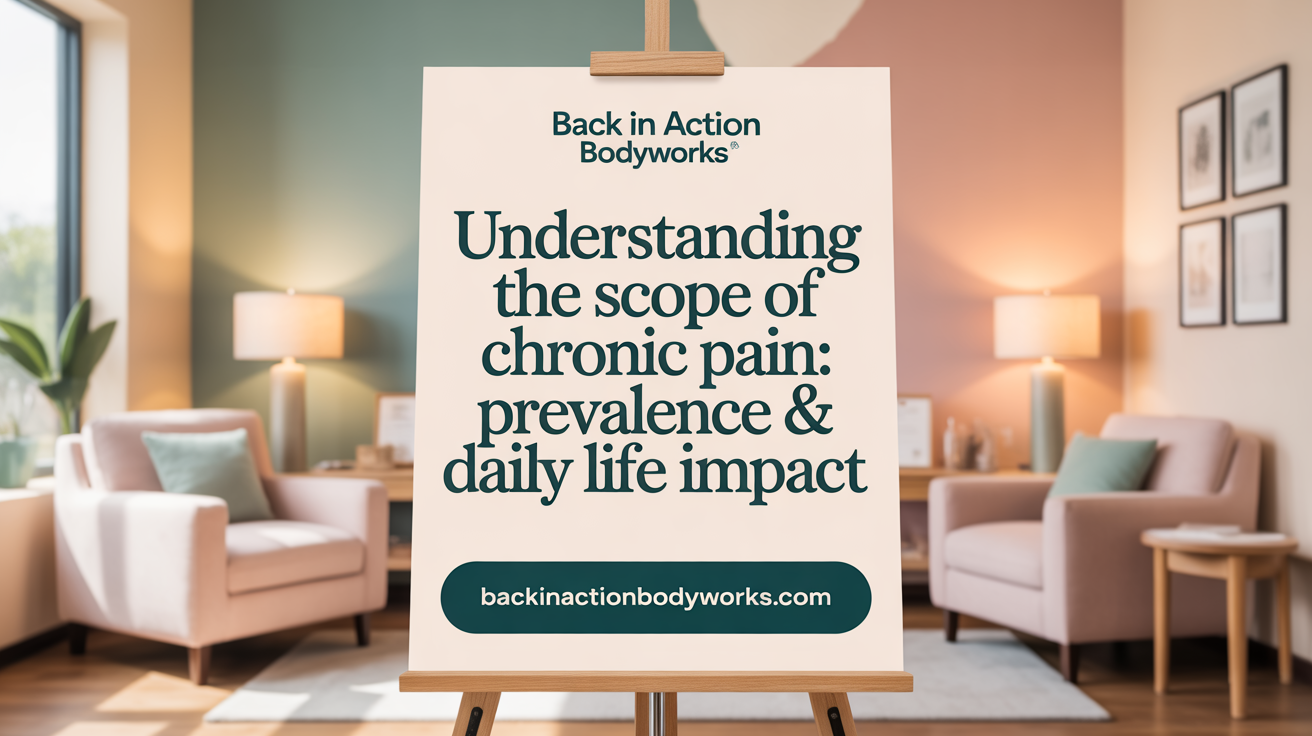
What are the current statistics on chronic pain prevalence and its impact on life activities?
Chronic pain remains a widespread health issue in the United States. As of 2023, approximately 24.3% of adults reported experiencing pain that lasted more than three months within the past three months. Of these individuals, about 8.5% experienced high-impact chronic pain, which significantly limits their daily activities most or every day.
The prevalence of chronic pain increases with age. For those aged 65 and older, 36.0% report living with chronic pain, and 13.5% experience high-impact pain that hampers their daily life.
Gender disparities are evident, with women more commonly affected—25.4% of women versus 23.2% of men suffer from chronic pain. Similarly, high-impact pain is more prevalent in women (9.6%) compared to men (7.3%).
Racial and ethnic differences also influence pain prevalence. American Indian and Alaska Native adults report higher rates of chronic pain (30.7%) and high-impact pain (12.7%) compared to Asian and Hispanic populations. These disparities highlight the need for targeted pain management strategies.
Geographic location plays a role as well. Individuals living in less urbanized or nonmetropolitan areas experience higher rates of chronic pain, with prevalence reaching as high as 31.4%. This suggests that access to healthcare and socioeconomic factors may impact chronic pain experiences and their interference with daily activities.
Overall, chronic pain significantly affects quality of life, especially among vulnerable populations, emphasizing the importance of effective pain management options like massage therapy and other modalities.
The 4 A's Framework: Optimizing Chronic Pain Management

What are the 4 A's of chronic pain and how do they help in pain management?
The 4 A's of chronic pain are analgesia, activities of daily living, adverse events, and aberrant drug-taking behaviors. This framework serves as a comprehensive guide for healthcare providers to assess and manage chronic pain more effectively.
Analgesia focuses on measuring the level of pain relief a patient experiences from treatment. It helps determine whether the current therapy is effective or if adjustments are needed.
Activities of daily living (ADLs) evaluate how pain impacts a patient's ability to perform everyday tasks such as dressing, cooking, or cleaning. Monitoring ADLs provides insights into how pain affects overall functionality and quality of life.
Adverse events involve tracking any side effects or complications resulting from treatment, ensuring that pain management strategies do not introduce unnecessary risks.
Aberrant drug-taking behaviors help identify potential misuse or addiction issues related to medication use. Recognizing these behaviors early allows for safer prescribing practices and alternative pain management approaches.
When applied in clinical settings, the 4 A's facilitate a balanced approach to pain management. They enable healthcare professionals to tailor treatments to individual needs, adjusting strategies based on patient responses.
This method supports a patient-centered approach, emphasizing safety, efficacy, and quality of life. Regularly evaluating these four components ensures that pain relief is maximized while minimizing adverse outcomes.
Incorporating the 4 A's into routine practice improves communication between clinicians and patients, fostering trust and shared decision-making. Patients feel more engaged when their progress on these dimensions is regularly reviewed.
Overall, the 4 A's framework enhances the precision of chronic pain treatment, leading to better health outcomes, reduced risks, and improved patient satisfaction.
Scientific Evidence on the Effectiveness of Massage Therapy for Chronic Pain
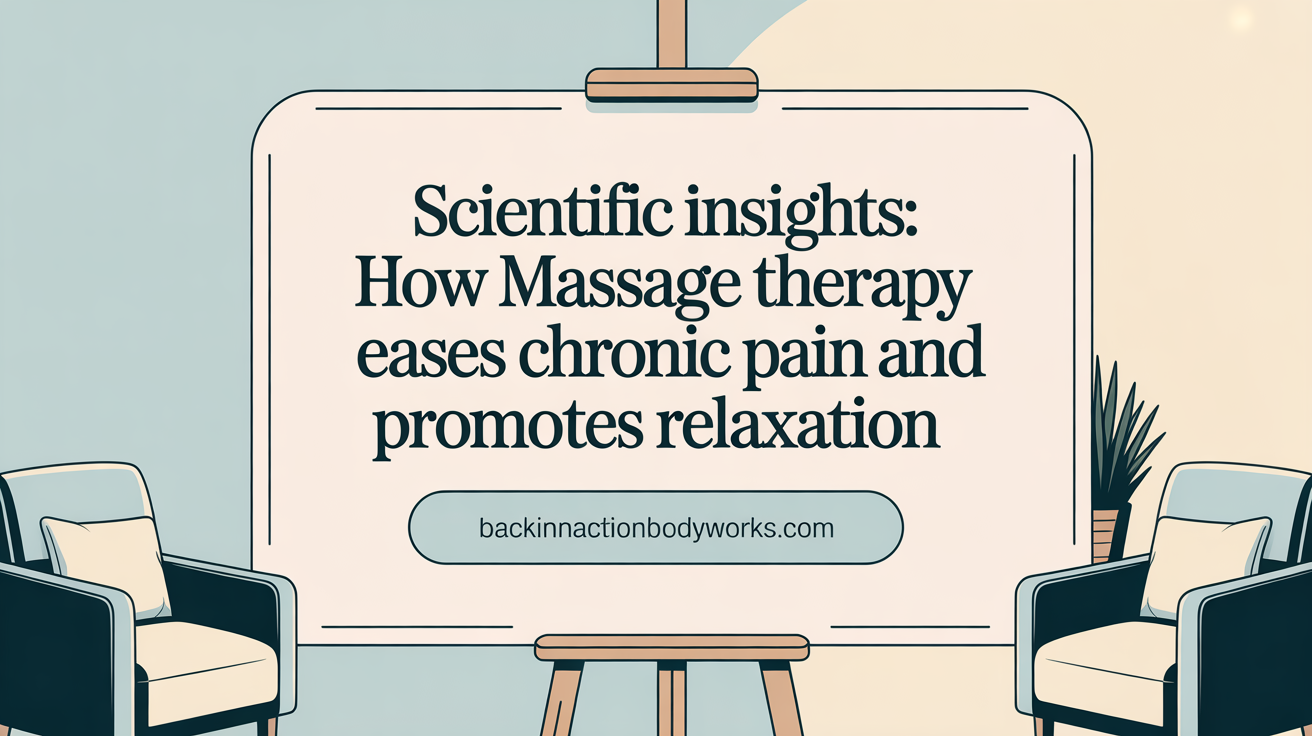
What do studies and scientific findings reveal about the long-term effectiveness of massage therapy for managing chronic pain conditions?
Recent systematic reviews and meta-analyses consistently highlight that massage therapy can provide notable short-term pain relief for individuals suffering from chronic pain. These reviews, which evaluate data from numerous randomized controlled trials, have found moderate-certainty evidence supporting the beneficial effects of massage on pain reduction, as well as improvements in anxiety and overall quality of life.
However, the overall confidence in these findings is limited. Most systematic reviews report low to very low strength of evidence, primarily because many primary studies lack detailed descriptions of the massage interventions, such as provider expertise or specific techniques used. Additionally, the majority focus on short-term outcomes, with few providing robust data on the long-term sustainability of benefits.
When comparing massage therapy to no treatment, the effect size (Standardized Mean Difference, SMD) is approximately -1.14, indicating a substantial short-term benefit. In contrast, comparisons with active treatments show smaller improvements (SMD = -0.26), and massage is more effective than sham treatments (SMD = -0.44). These findings suggest that while massage offers meaningful immediate relief, its long-term impact remains less certain.
Some moderately certain studies indicate that massage can enhance mood and quality of life, which are important aspects of managing chronic pain. For instance, reductions in anxiety (SMD = -0.57) have been documented, adding to its therapeutic value.
Although promising, current evidence underscores the need for more high-quality, long-term studies to ascertain whether the benefits of massage therapy endure over months or years. As it stands, massage is considered a safe and effective adjunct for managing pain in conditions like osteoarthritis, fibromyalgia, and low back pain, but establishing its role as a sustainable long-term solution requires further research.
Massage Therapy in Fibromyalgia and Myofascial Pain Syndrome: Clinical Insights
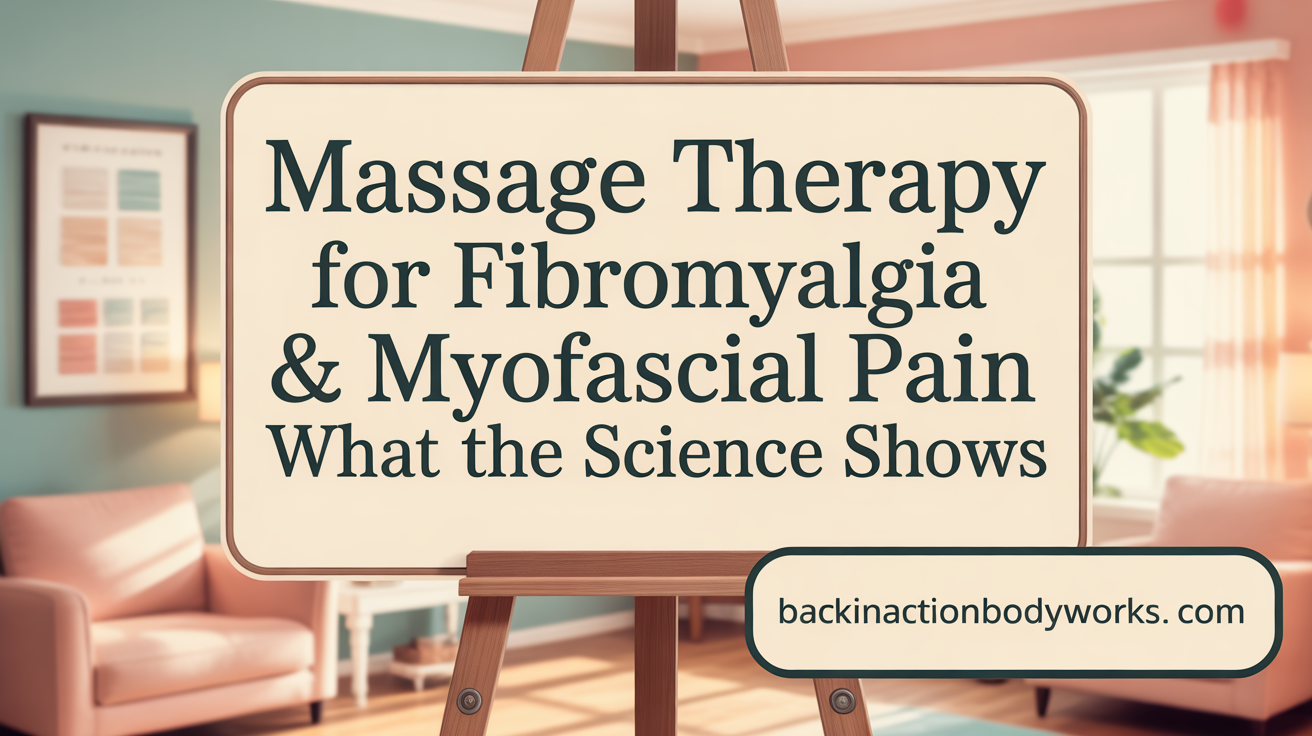
What scientific evidence exists on the long-term impacts of massage therapy for conditions such as fibromyalgia and myofascial pain syndrome?
Research indicates that massage therapy can offer valuable symptom relief for individuals suffering from fibromyalgia and myofascial pain syndrome, particularly when administered consistently over several weeks. Typically, studies show that treatments spanning five weeks or more result in short- to medium-term improvements in pain, anxiety, and depression.
Meta-analyses have consistently demonstrated notable immediate benefits from massage, with some evidence suggesting these improvements can persist for up to six months post-treatment. This ongoing relief suggests that massage could be an effective part of long-term symptom management.
Most scientific reviews highlight the safety of massage therapy—adverse events are infrequent and usually minor, such as slight soreness or discomfort. This high safety profile makes it an appealing adjunct option for managing chronic pain conditions.
However, while these findings are promising, the current body of evidence has limitations. Many studies feature small sample sizes and varied methodologies, making it difficult to draw definitive conclusions about long-term effects. The lack of extensive long-term follow-up in randomized controlled trials means that more research is needed.
Overall, massage therapy appears beneficial for short- and medium-term relief, with some indications of sustained symptom improvement. Still, larger, high-quality studies are essential to firmly establish its long-term benefits for fibromyalgia and myofascial pain syndrome.
For those interested in the current research landscape, a search query like "Long-term effects of massage on fibromyalgia and myofascial pain syndrome" can provide more detailed scientific insights.
Consumer Adoption and Industry Growth in Massage Therapy

How prevalent is massage therapy among consumers?
Massage therapy has become a popular treatment among adults in the United States, with approximately 21% of adults having received a massage in the past year. The industry itself was valued at around $18 billion, reflecting its significant growth. Beyond just relaxation, many consumers recognize massage therapy as beneficial for various health issues.
What do consumers believe about the benefits of massage?
A large majority of users perceive massage as effective for overall health and wellness, with 86% rating it beneficial. About 87% believe massage can reduce pain effectively. Additionally, 78% see it as a form of medical or stress-related treatment. This widespread recognition supports its role in mainstream healthcare.
How is the massage industry evolving?
The profession is experiencing rapid growth, with employment for massage therapists projected to increase by 22% between 2018 and 2028. Companies like MassageLuXe are planning expansions, aiming to become household names by 2030. This upward trend highlights the increasing demand for professional massage services.
Who is driving the demand?
Demographic shifts significantly influence the industry. The aging population, including both Baby Boomers and Millennials, is fueling demand due to its health benefits. Many seek massage therapy to improve mobility, reduce arthritis symptoms, and manage chronic pain conditions like fibromyalgia and myofascial pain syndrome.
Why is massage therapy gaining recognition as healthcare?
Most consumers—about 71%—consider massage therapy as part of healthcare. The rise in medical acceptance, combined with its effectiveness for managing pain and other symptoms, underscores a shifting view of massage from luxury to an essential health service.
| Aspect | Details | Further Insights |
|---|---|---|
| Usage Rate | 21% of adults in the past year | Reflects broad popularity |
| Industry Valuation | $18 billion | Indicative of substantial economic growth |
| Employment Outlook | +22% growth projected by 2028 | Positive job market trend |
| Demographic Drivers | Millennials, Baby Boomers, aging population | Increased health focus among these groups |
| Consumer Perceptions | 86% beneficial for health, 87% for pain relief | Strong public belief in effectiveness |
| Industry Expansion | Plans to expand and become more integrated into healthcare | Future growth and integration trends |
Overall, the massage therapy industry is experiencing robust growth driven by consumer perceptions of health benefits and demographic shifts, positioning it as a vital component of holistic health management.
Emerging Practices and Trends in Massage Therapy for Chronic Pain
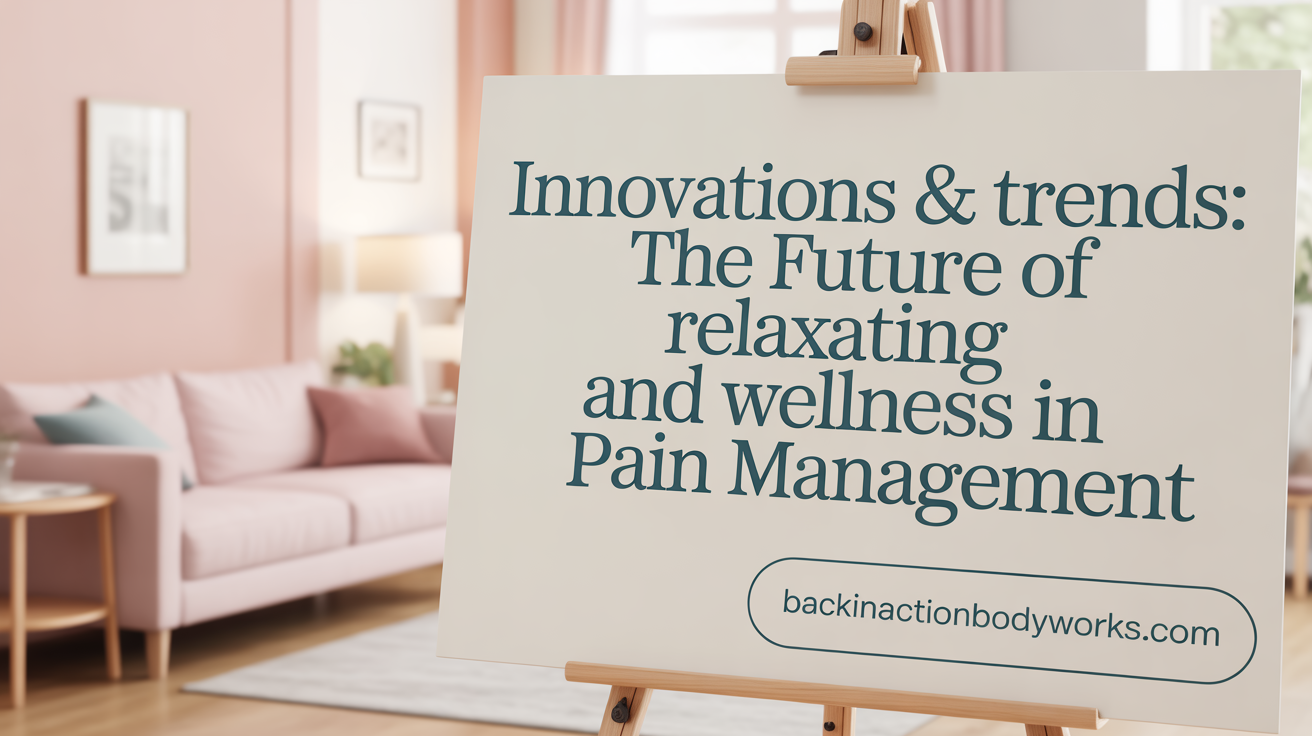
What are the emerging trends and evolving practices in massage therapy for chronic pain management?
The field of massage therapy is continuously evolving, with several innovative trends shaping how this treatment is delivered and integrated into pain management strategies. One notable trend is the incorporation of advanced technologies, such as AI-powered devices, virtual reality, and sensor analytics. These tools help personalize therapy by providing real-time feedback and adapting techniques to each individual's specific needs, making treatments more effective.
Holistic and energy-based approaches are also gaining popularity. Therapies like Reiki, Polarity Therapy, and reflexology focus on balancing the body's energy systems. Practitioners aim to enhance overall well-being, which can complement traditional massage methods and contribute to pain relief.
Moreover, massage therapy is increasingly recognized for its mental health benefits. Techniques are now being combined with tools such as massage guns or virtual environments that promote relaxation and reduce anxiety and depression. This integrative approach addresses both physical discomfort and emotional stress, which often coexist in chronic pain sufferers.
Innovation extends beyond the treatment room with the rise of mobile and online massage services. These platforms increase access, allowing clients to receive personalized care conveniently at home or remotely. Such services are especially valuable for those with mobility issues or busy schedules, providing tailored interventions aligned with their health goals.
Lastly, the industry is shifting toward sustainability and ongoing practitioner education. Focused on incorporating eco-friendly practices and ensuring therapists stay current with research and technology, these strategies help maintain high standards of care and competitiveness in the expanding massage therapy landscape.
Overall, these emerging trends underscore a move toward more personalized, holistic, and accessible pain management options, reinforcing massage therapy's role as a vital component in chronic pain treatment.
Technology and Holistic Approaches in Long-Term Pain Management
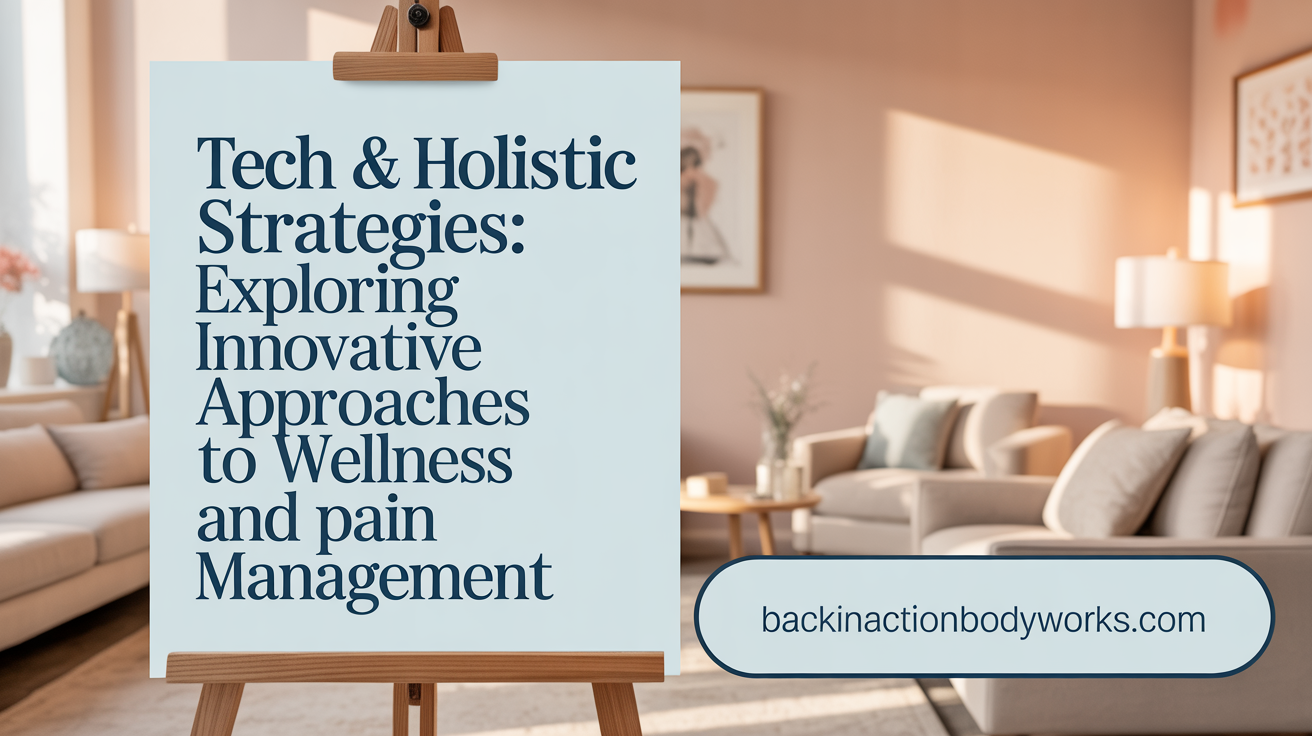
How do technology and holistic approaches play a role in long-term chronic pain management strategies?
In recent years, innovative technology has become integral to managing chronic pain effectively and sustainably. Wearable devices, such as fitness trackers and specialized sensors, collect real-time data on physical activity levels, movement patterns, and pain responses. This information enables healthcare providers to design personalized rehabilitation programs, monitor progress remotely, and make real-time adjustments, thereby improving treatment outcomes.
Telehealth platforms allow patients to consult with clinicians remotely, providing continuous support and guidance without frequent clinic visits. The inclusion of virtual reality (VR) offers distraction techniques and immersive exercises that can motivate patients to stay engaged with their therapy, while also helping to restore mobility and reduce pain perception.
Artificial intelligence (AI) enhances these efforts by analyzing large amounts of health data to identify early warning signs of exacerbation or deterioration. AI-driven predictive models can help clinicians intervene proactively, fine-tuning treatment plans based on individual responses.
Holistic approaches further support long-term pain management by integrating psychological and lifestyle factors. Mindfulness practices, meditation, and stress reduction techniques help address the mental and emotional influences of chronic pain. Proper nutrition and dietary habits support bodily functions and decrease inflammation, often alleviating symptoms.
Manual therapies like massage and acupuncture are combined with these digital tools to target pain at its roots, promoting relaxation and physical well-being. These therapies are tailored based on ongoing assessments of patient response, ensuring treatments remain appropriate and effective.
Bringing together technology and holistic strategies creates a comprehensive, accessible, and patient-centered framework. It helps address the complex, multifaceted nature of chronic pain, facilitating better quality of life with fewer reliance on medication. As research and technology continue to evolve, these integrated approaches promise even more effective, personalized, and sustainable pain management solutions.
Alternative and Integrative Therapies Complementing Massage for Chronic Pain
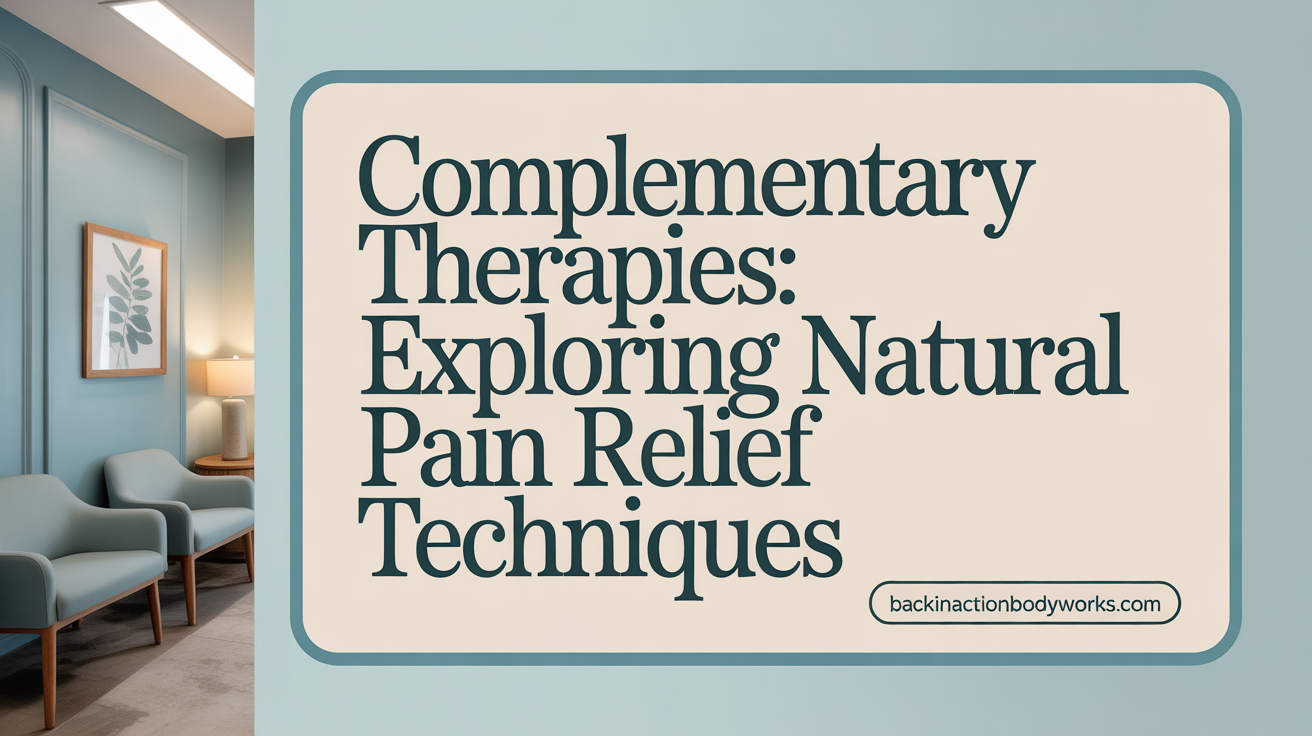
What are some alternative and complementary therapies used alongside massage?
Many individuals with chronic pain turn to various non-pharmacological treatments to help manage their symptoms more effectively. Exercise and physical therapy are common, with about 73% and 67.4% of patients, respectively, engaging in these activities. These approaches can improve mobility and reduce pain levels.
Acupuncture and herbal supplements are also popular options. While acupuncture is considered promising, around 65% of those who haven't tried it are open to exploring its benefits. Herbal supplements, yoga, meditation, chiropractic care, and medical marijuana are also gaining attention as alternative therapies.
How do topical analgesics like CBD fit into pain treatment?
CBD and other topical analgesics, such as lidocaine patches, are increasingly used for managing conditions like arthritis, neuropathy, and musculoskeletal pain. They are viewed as safe, non-invasive options that can provide relief without systemic side effects.
What role does meditation and chiropractic care play?
Mind-body techniques such as meditation are employed to help reduce stress and pain perception. Chiropractic care is often used for musculoskeletal issues, especially back and neck pain. Both therapies contribute to an integrated approach to chronic pain management.
Are there trends away from opioids?
Yes, there is a significant movement towards reducing opioid use due to their adverse effects. The development of non-opioid drugs, like nerve growth factor inhibitors, alongside therapies such as radiofrequency ablation and peripheral nerve stimulation, reflect this shift. These alternatives aim to offer safer, effective pain relief.
| Therapy Type | Usage Rate (%) | Notes |
|---|---|---|
| Exercise | 73 | Improves function and reduces pain |
| Physical therapy | 67.4 | Custom tailored to individual needs |
| Massage | 58.4 | Often combined with other therapies |
| Acupuncture | 36.1 | Increasing popularity; open to many patients |
| Herbal supplements | Not specified | Growing interest in natural remedies |
| CBD and Topical Analgesics | Not specified | Perceived as safe; effective for localized pain |
| Meditation and Mindfulness | Not specified | Helps decrease stress-related pain |
| Chiropractic care | Not specified | Focuses on musculoskeletal alignment |
Healthcare providers are encouraged to incorporate these therapies into comprehensive pain management plans, tailoring treatments to individual preferences and responses, thus improving overall quality of life for those with chronic pain.
The Research Landscape: Gaps and Opportunities in Massage Therapy Studies
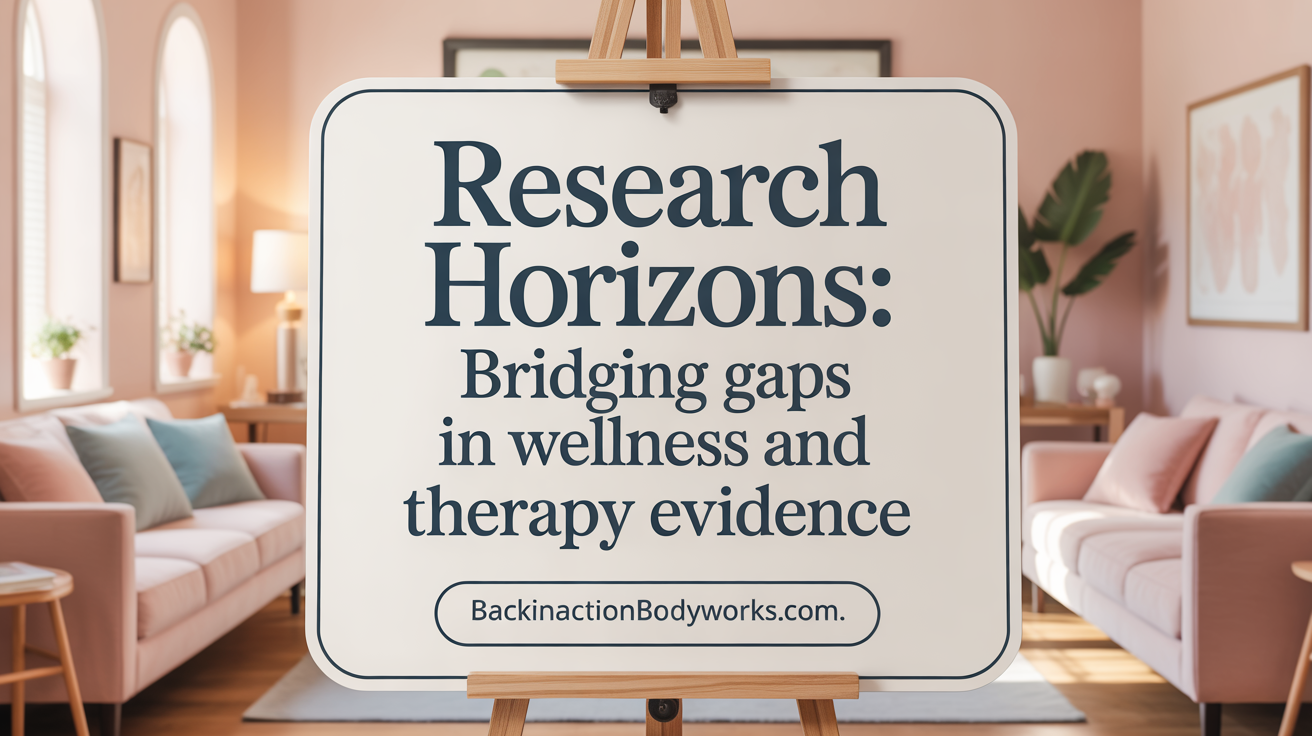
What are the methodological challenges in trials?
Many systematic reviews on massage therapy for pain highlight low to very low strength of evidence, primarily due to methodological issues in primary studies. Common challenges include small sample sizes, lack of blinding, and inconsistent control conditions. These limitations hinder the ability to draw definitive conclusions about massage's effectiveness.
Why is there a lack of detailed descriptions of massage interventions?
A significant gap in the current research is the insufficient reporting of specific massage techniques, provider characteristics, and session details. This lack of granular information makes it difficult to determine which techniques or provider attributes are most effective, hampering efforts to standardize and optimize treatments.
Is research mostly focused on short-term benefits?
Most existing studies emphasize the immediate or short-term effects of massage therapy, with limited data on long-term outcomes. This short-term focus leaves unanswered questions about the durability of massage benefits and their role in sustained pain management.
What do bibliometric trends reveal about the field?
Research into modalities like Tuina—a traditional Chinese massage—has increased gradually from 2004 to 2023, with a focus primarily on chronic pain conditions such as low back pain. Publications are mostly from China and the U.S., with Shanghai University of Traditional Chinese Medicine and researcher Min Fang leading studies.
Which regions and journals are most influential?
prominent research hubs include China and the United States. The journal "Medicine" stands out as the most influential platform publishing related studies. These regions and journals shape the evolving understanding of massage's role in pain therapy.
Addressing gaps and exploring new avenues
Advancing massage research necessitates rigorous trial design, detailed intervention reporting, and long-term follow-up. Emerging areas like Tuina demonstrate promise, especially for conditions like low back pain, and represent exciting opportunities for expanding evidence-based practice.
| Aspect | Current Status | Opportunities for Improvement | Geographical Focus | Leading Institutions & Journals |
|---|---|---|---|---|
| Methodology | Low to very low evidence strength | Enhance trial design & standardize interventions | China & USA | Shanghai University of Traditional Chinese Medicine & Medicine journal |
| Intervention Detailing | Insufficient descriptions | Recommend comprehensive reporting standards | Mostly China & US | - |
| Long-term Data | Limited | Incorporate larger, long-term studies | Global | - |
| Research Trends | Growing interest in traditional therapies | Foster cross-cultural, comparative research | China, US | - |
Understanding these gaps offers pathways for future research, aiming for rigorous, transparent, and long-lasting evidence in massage therapy for chronic pain.
Future Directions: Innovations and Standardization in Massage-Based Pain Therapies
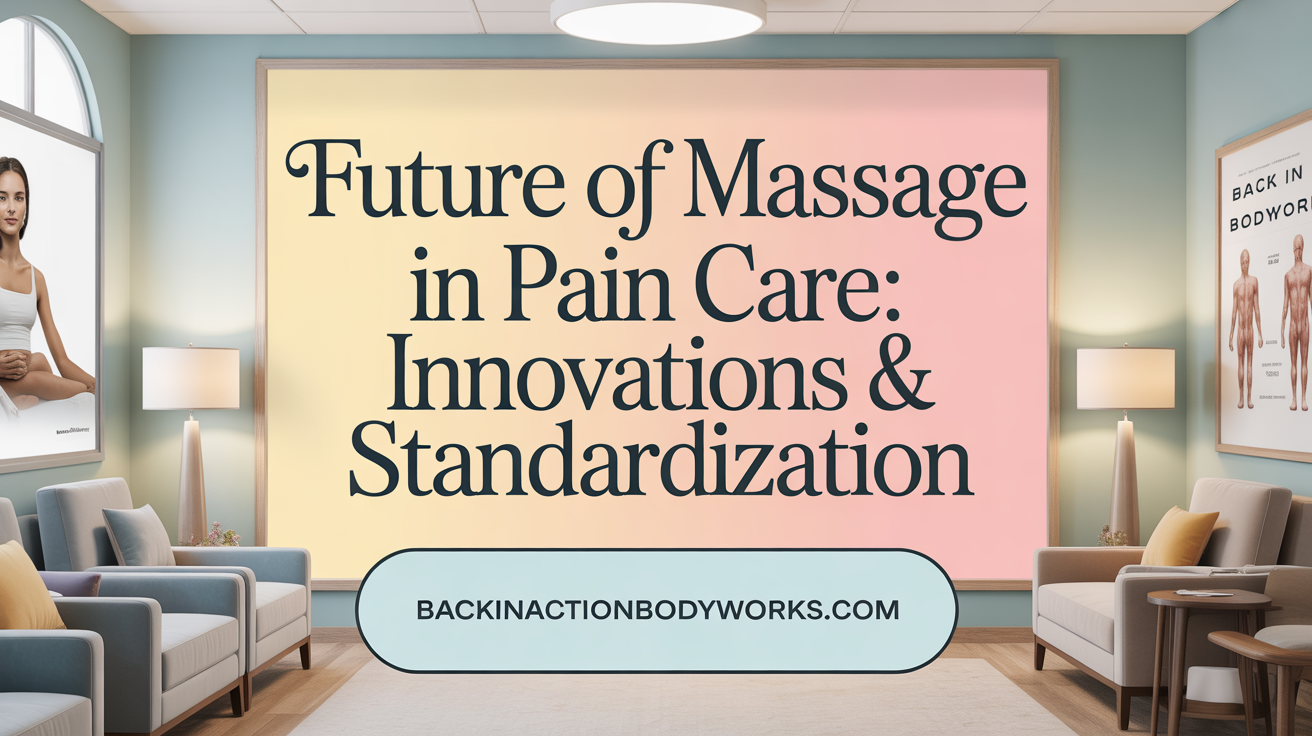 The landscape of massage therapy for chronic pain management is poised for exciting advancements that aim to personalize and enhance treatment effectiveness. Future strategies are likely to focus on developing tailored protocols that blend traditional massage techniques with emerging complementary therapies such as energy healing, sound therapy, and vibration treatments. These approaches seek to optimize pain relief and overall wellness.
The landscape of massage therapy for chronic pain management is poised for exciting advancements that aim to personalize and enhance treatment effectiveness. Future strategies are likely to focus on developing tailored protocols that blend traditional massage techniques with emerging complementary therapies such as energy healing, sound therapy, and vibration treatments. These approaches seek to optimize pain relief and overall wellness.
Technological integration plays a vital role in this evolution. Artificial intelligence (AI) and wearable devices are expected to become standard tools for treatment customization and monitoring. AI algorithms can analyze patient data to create individualized treatment plans, while wearables provide real-time feedback on physiological responses, allowing therapists to adjust sessions dynamically.
The healthcare community is also moving towards multidisciplinary care models, combining massage therapy with other medical and psychological treatments. This holistic approach expands the role of massage within broader health and wellness frameworks, demonstrating benefits beyond pain relief, such as improving mental health and mobility.
Enhancing professional standards is another key focus. Efforts to standardize licensure, certification, and professional recognition will bolster the credibility and accessibility of massage therapy as a mainstream healthcare option. Such initiatives aim to ensure high-quality care and foster greater integration into medical systems.
As demand grows, so does the expansion of mobile services and advanced training programs. Mobile clinics and telehealth options will make massage therapy more accessible, especially for patients with mobility challenges or limited access to in-person care. Additionally, ongoing research will continue to validate massage’s efficacy, supporting its application in managing conditions like fibromyalgia, myofascial pain, and mental health issues.
Overall, the future of massage therapy in chronic pain treatment is characterized by technological innovation, evidence-based customization, and greater professional recognition, which together promise to improve outcomes and expand its role as a trusted healthcare modality.
Looking Ahead: The Growing Impact of Massage Therapy in Chronic Pain Management
Massage therapy holds significant promise in the multifaceted management of chronic pain, supported by emerging scientific evidence, growing consumer adoption, and industry growth. While current research underscores its safety and short-term benefits, ongoing studies aim to clarify its long-term effectiveness and optimize treatment protocols for specific conditions like fibromyalgia and myofascial pain syndrome. The integration of technology and holistic practices heralds a new era of personalized, scalable, and multidisciplinary approaches. As innovations continue and professional standards evolve, massage therapy is poised to become an increasingly vital component of comprehensive chronic pain care, addressing both physical symptoms and mental well-being for improved quality of life.
References
- The Impact of Massage Therapy on Function in Pain Populations—A ...
- 2024 Chronic Pain Trends and Alternative Treatments - Taopatch
- Pain Management Trends Every Healthcare Professional Should ...
- Massage for Pain: An Evidence Map - PMC - PubMed Central
- Recent trends in Tuina for chronic pain management: A bibliometric ...
- The Future of the Massage Therapy Industry - MassageLuXe
- Massage and Chronic Pain | Massage Therapy Journal - AMTA
- NCBI
- The Future Of Massage Therapy: 2025 Top Trends - ClinicSense
Recent articles
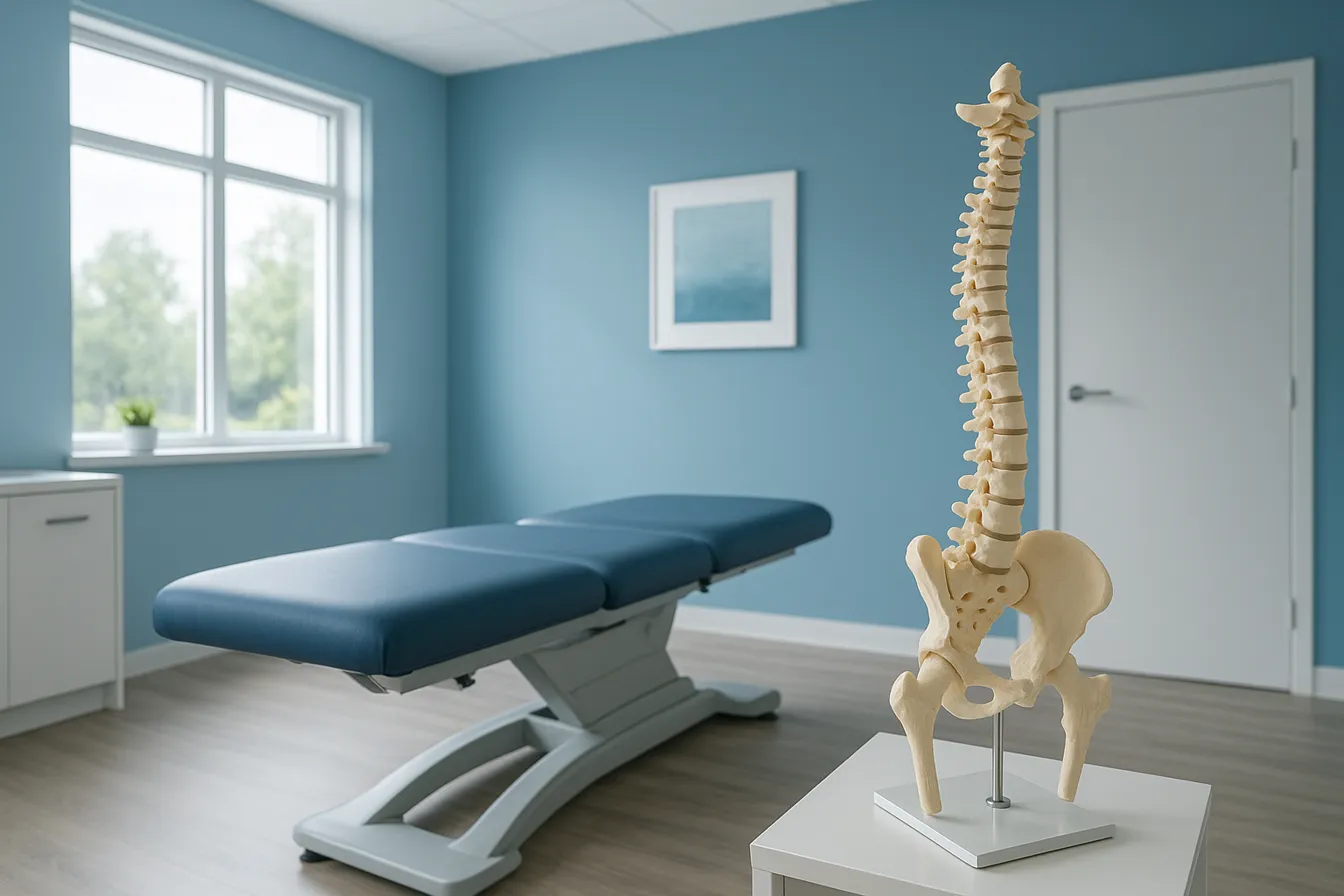
Chiropractic Care: Key Benefits for Managing and Preventing Back Pain
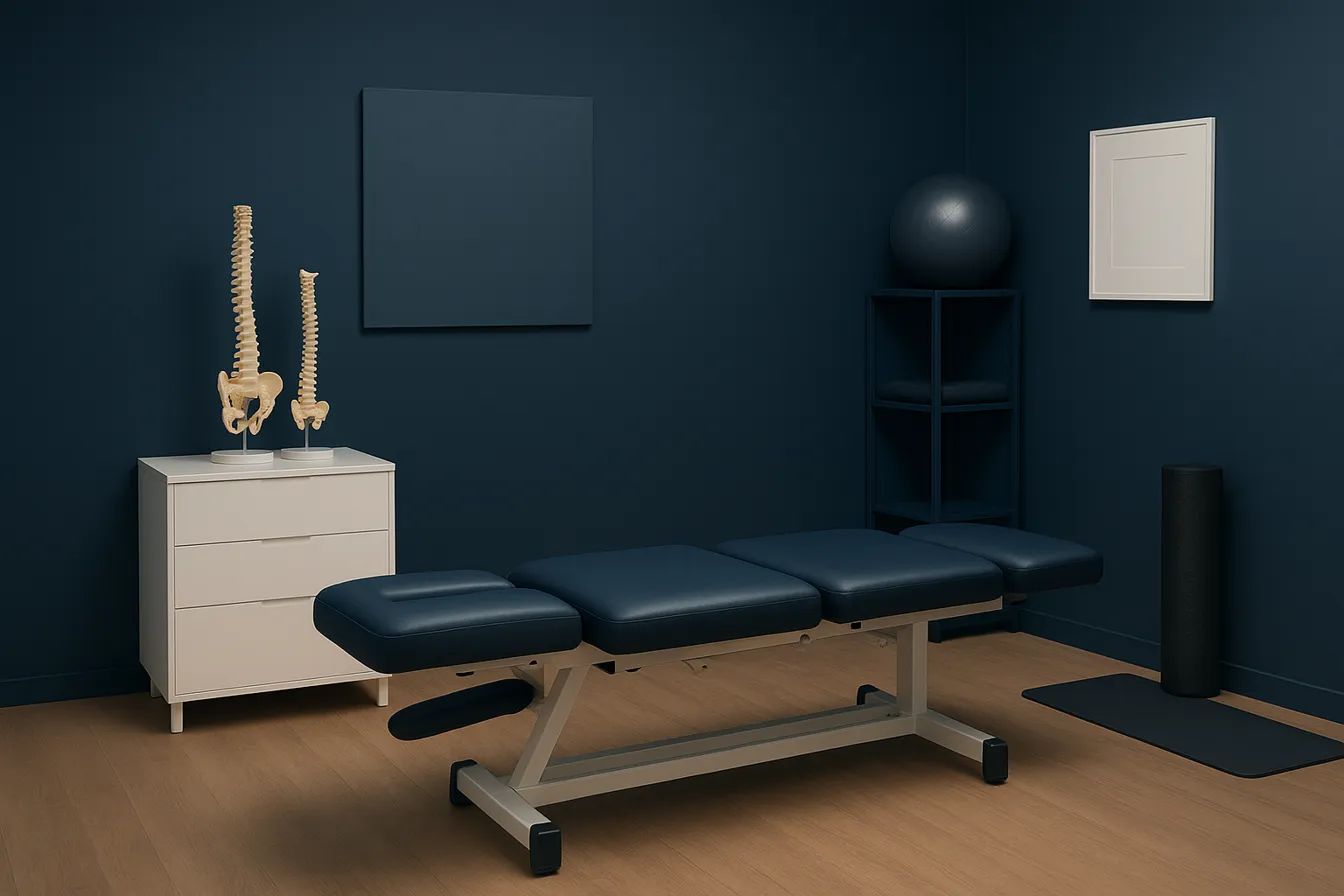
Corrective Exercises That Support Long-Term Relief from Sciatica

Chiropractic Methods That Provide Lasting Relief from Back Pain
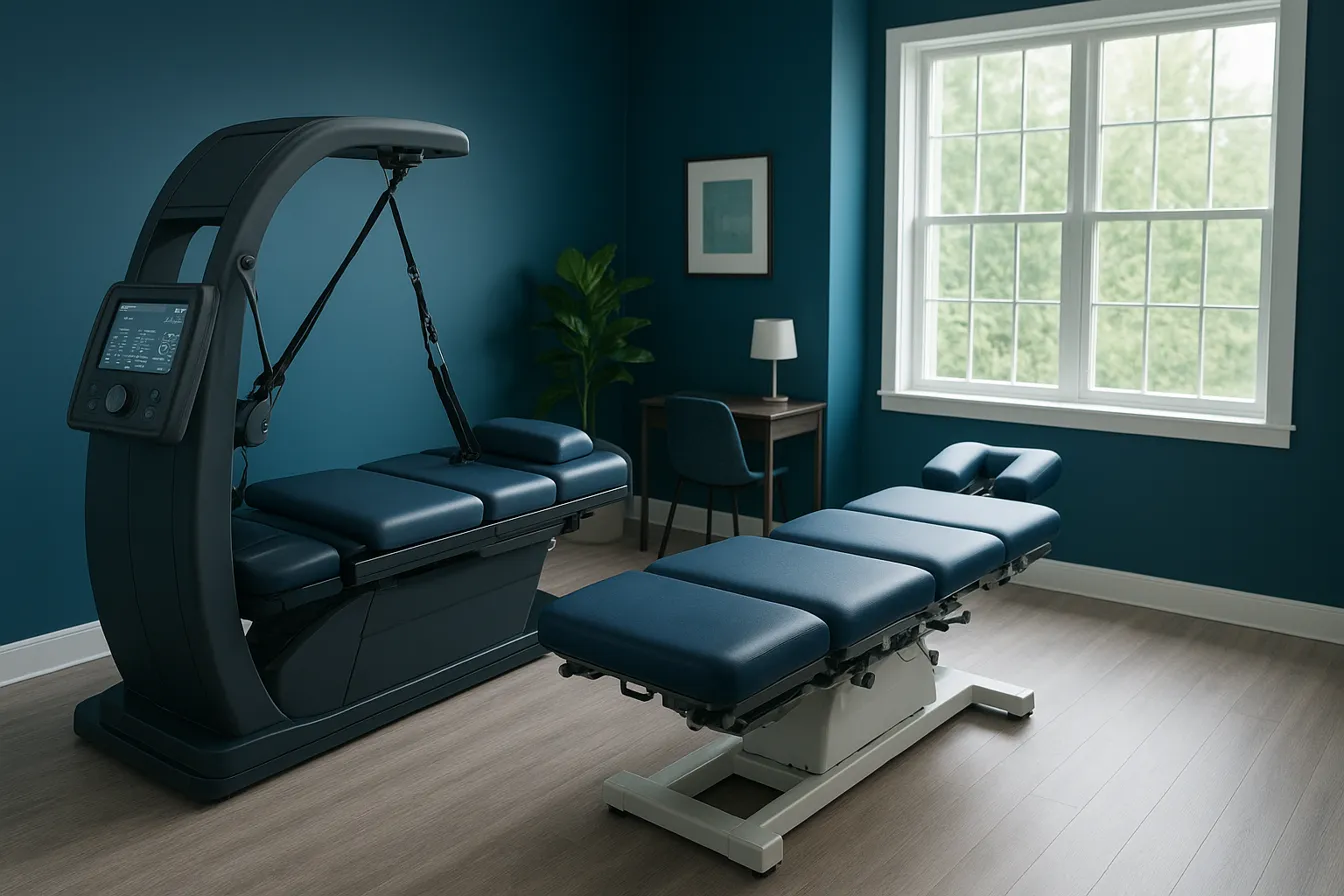
Understanding Spinal Decompression and Its Benefits for Sciatica

Real Patient Testimonials: Success Stories in Chiropractic Care

Top Questions to Ask Your Chiropractor During Your Initial Visit

Physiotherapy's Role in Supporting Chiropractic Treatment Plans

The Role of Diet and Nutrition in Enhancing Wellness and Chiropractic Care

Inspiring Patient Testimonials Highlighting Chiropractic Success

Chiropractic Care: A Natural Solution for Back Pain Relief

Amazing Patient Success Stories in Chiropractic Wellness

Combining Physiotherapy and Chiropractic for Optimal Healing

Spinal Decompression Therapy: A Breakthrough for Sciatica Sufferers

5 Holistic Treatments That Complement Chiropractic Care

How Physiotherapy Supports and Enhances Chiropractic Treatment

Root Cause Versus Symptom Treatment: Making the Right Choice

7 Essential Things to Know Before Choosing Your Chiropractor

Why Addressing Root Causes of Pain Matters More Than Just Symptoms

Nutritional Counseling Strategies to Boost Your Overall Wellness

How Spinal Decompression Therapy Alleviates Sciatic Nerve Pain

Long-Term Pain Relief Through Targeted Corrective Exercises

10 Benefits of Integrating Physiotherapy with Chiropractic Treatments

Corrective Exercises That Help Prevent Recurring Pain

8 Corrective Exercises Proven for Lasting Pain Relief

Lifestyle Habits for Maintaining a Healthy Spine

What You Will Experience at Your Initial Chiropractic Visit

What Happens at Your First Visit to a Chiropractor?

Focusing on Root Cause Analysis for Effective Pain Relief
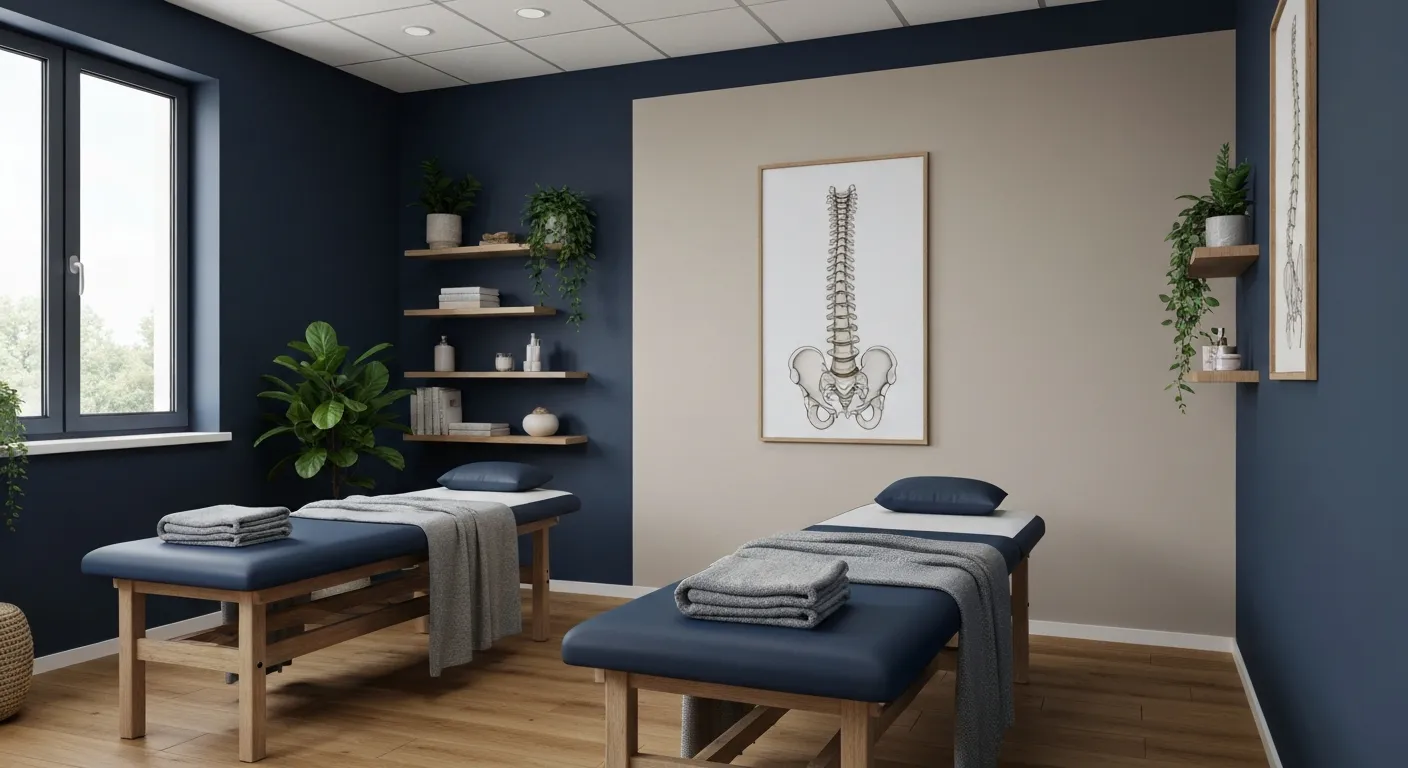
Tips for Lifestyle Changes to Support Spinal Health

Tips for Lifestyle Changes to Support Spinal Health

Holistic Treatment Plans: Alternatives to Surgery for Chronic Pain

Enhance Wellness Through Personalized Nutritional Counseling

Non-Invasive Pain Relief: Exploring Holistic Treatment Alternatives

Sciatica Relief Through Targeted Spinal Decompression

Integrating Physiotherapy with Chiropractic Treatments for Better Results

Testimonials That Demonstrate the Benefits of Chiropractic Care

The Power of Corrective Exercises in Pain Management

A Step-by-Step Guide to Your Initial Chiropractic Consultation

9 Nutritional Tips to Enhance Your Chiropractic Wellness Journey

Patient Experiences: How Chiropractic Care Changed Their Lives

Lifestyle Recommendations to Keep Your Spine in Top Shape

Effective Corrective Exercises for Long-Term Pain Relief

Back Pain Benefits: What Chiropractic Care Can Do for You
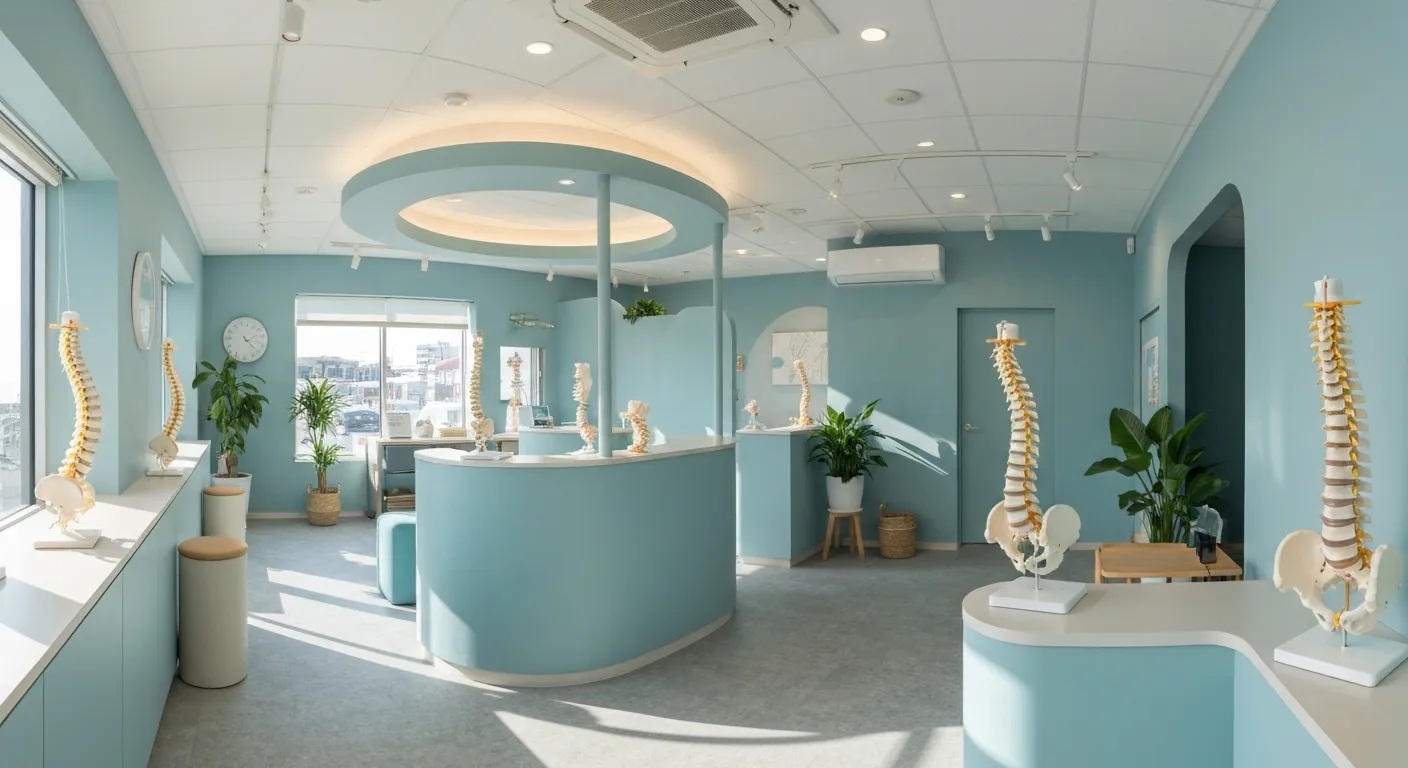
Spinal Decompression Techniques for Effective Sciatica Relief

Top Nutritional Counseling Tips for Enhanced Wellness

6 Lifestyle Habits That Boost Spine Health Daily

Discover Holistic and Non-Surgical Pain Relief Solutions

Exploring Holistic and Non-Surgical Treatment Options for Pain

The Role of Physiotherapy in Enhancing Chiropractic Care Outcomes

Complementing Chiropractic Care with Physiotherapy: What You Need to Know

What to Expect During Your First Chiropractic Visit

Simple Lifestyle Adjustments to Maintain a Healthy Spine

Personalized Nutritional Counseling for Improved Health Outcomes

Exploring Non-Surgical Treatments for Spine-Related Conditions

An Introduction to Spinal Decompression for Sciatica Patients

Transformative Success Stories: Patient Experiences with Chiropractic Treatments

Why Chiropractic Care Is Essential for Back Pain Relief

Addressing Underlying Causes Versus Symptom Management in Pain Care

The Role of Nutrition in Enhancing Chiropractic Treatment Effectiveness

Sciatica Treatment Options: Is Spinal Decompression Right for You?

Lifestyle Tips to Maintain a Healthy Spine and Prevent Back Issues

The Synergy Between Physiotherapy and Chiropractic Treatments
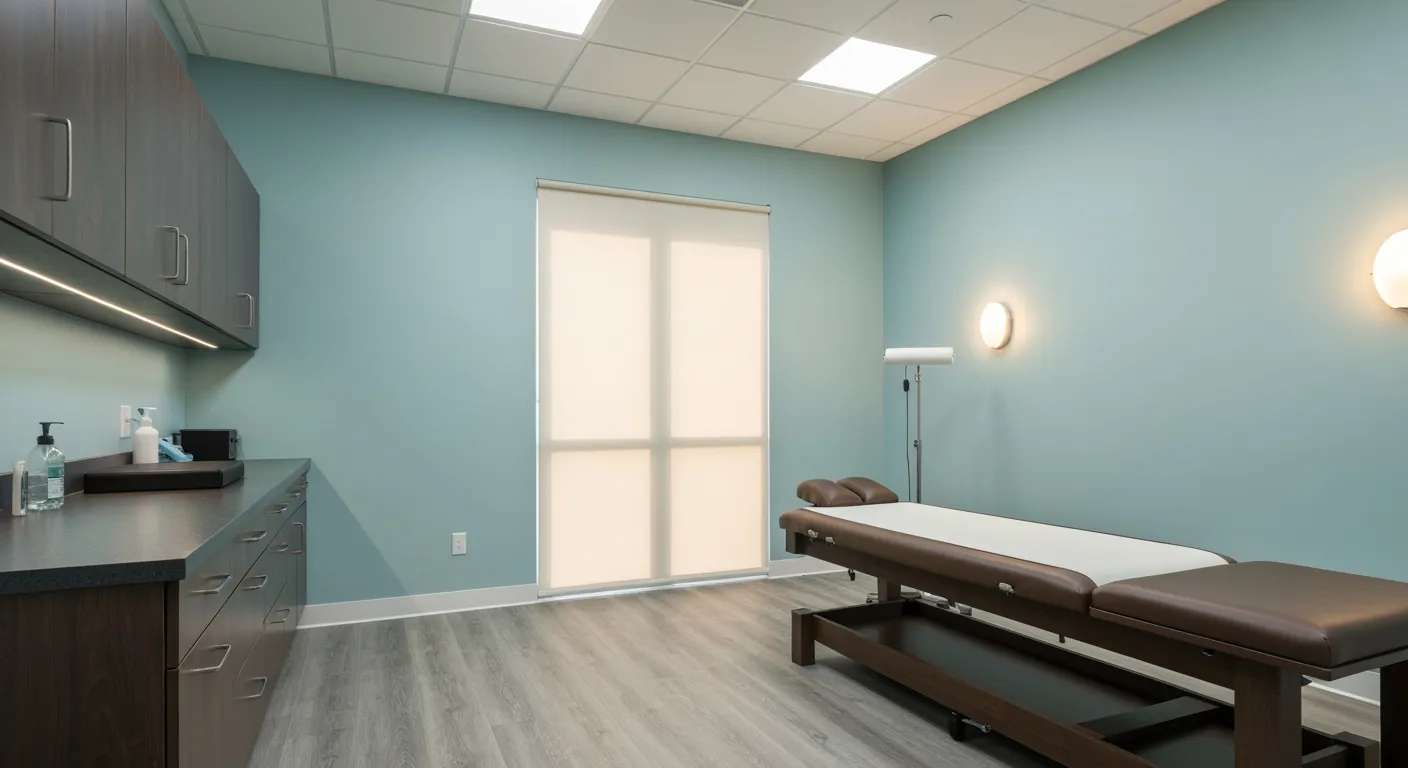
What Happens During Your Initial Chiropractic Consultation

Effective Corrective Exercises for Sustainable Pain Management

Taking a Root Cause Approach to Chronic Pain Management

Holistic Pain Management Techniques Without Surgery

How Patient Success Stories Validate Chiropractic Care Benefits

Spinal Decompression: Innovative Treatment for Sciatic Nerve Pain

Spinal Decompression Therapy: A Non-Invasive Approach to Sciatica Relief

Exploring Holistic Approaches Beyond Surgery for Pain Relief

Practical Lifestyle Advice to Support a Healthy Spine Every Day

Corrective Exercise Routines Designed for Long-Term Pain Prevention

Real Patient Stories: Overcoming Chronic Pain with Chiropractic Care

Lifestyle Changes That Promote a Healthy Spine and Prevent Injury

How Addressing the Root Cause of Pain Leads to Lasting Relief

Non-Surgical Holistic Therapies to Manage Chronic Pain Effectively

Nutritional Counseling's Impact on Physical Health and Healing

Benefits of Regular Chiropractic Care for a Stronger Back

Your First Chiropractic Visit: What to Expect and How to Prepare

Patient Experiences: How Chiropractic Care Transformed Their Lives

Exploring Holistic, Non-Surgical Options for Pain Management

Combining Physiotherapy with Chiropractic Treatments for Enhanced Recovery

Holistic Treatments That Offer Alternatives to Surgery for Pain Relief

Corrective Exercise Strategies for Long-Term Spine Health

How Physiotherapy Complements Chiropractic Adjustments for Better Outcomes

First-Time Chiropractic Visitors: What You Should Know

Understanding the Importance of Treating Pain at Its Source

Adopting Lifestyle Changes to Support Your Spine's Wellness

Utilizing Physiotherapy to Enhance Chiropractic Treatment Outcomes

The Key Advantages of Chiropractic Care for Back Pain Sufferers

Why Focusing on Root Causes Improves Pain Treatment Success

Corrective Exercises That Promote Lasting Pain Relief and Mobility

Sciatica Relief Through Targeted Spinal Decompression Techniques

Preparing for Your First Chiropractic Appointment with Confidence

Healthy Lifestyle Habits for Maintaining Spinal Alignment

Success Stories Highlighting Chiropractic's Role in Pain Recovery

Top Benefits of Chiropractic Care for Chronic Back Pain

Nutrition Tips to Boost Your Overall Wellness and Recovery

How Chiropractic Care Alleviates Back Pain Naturally

